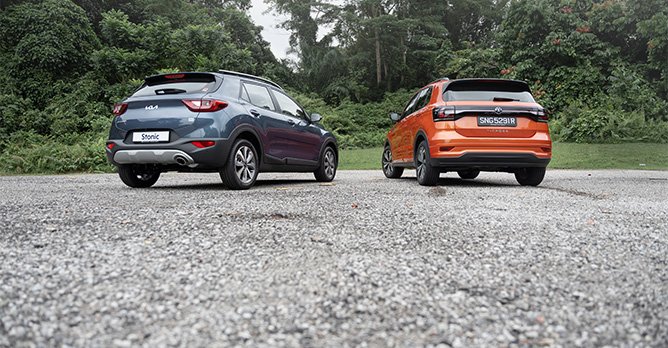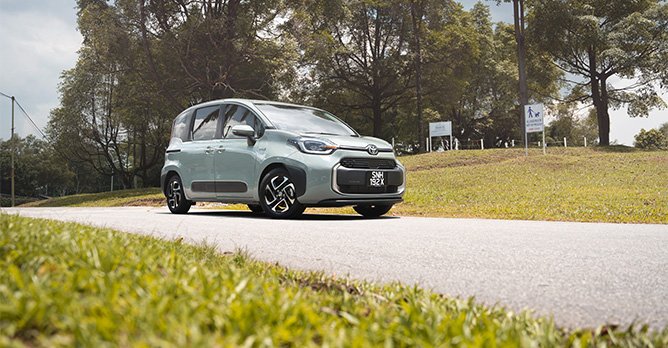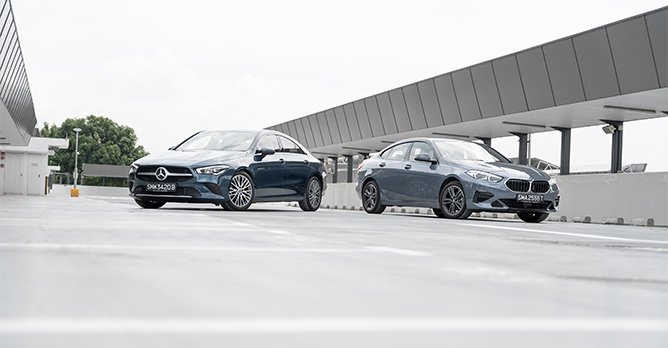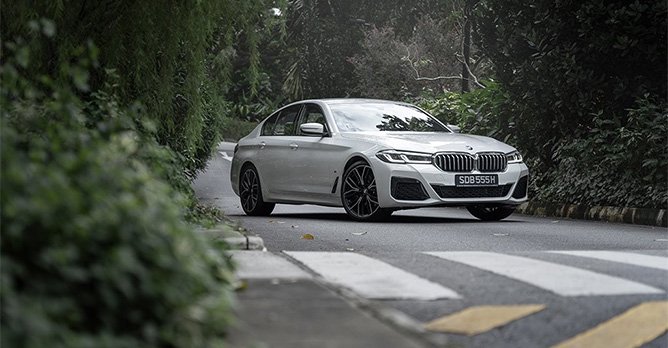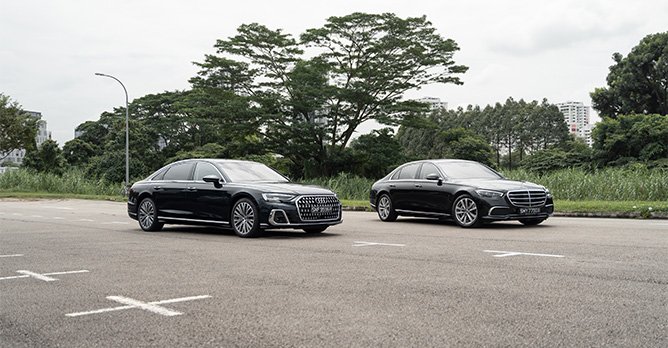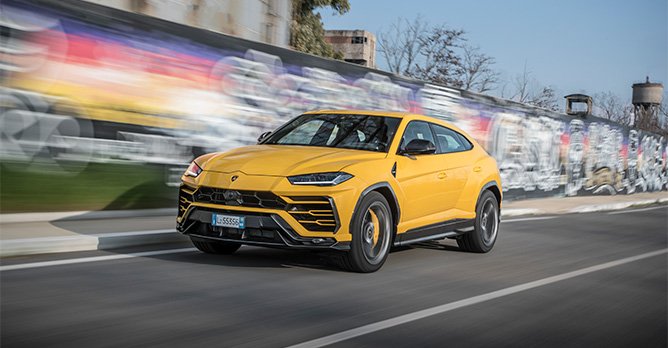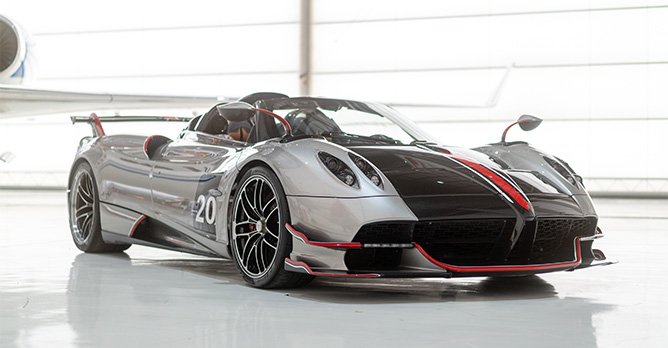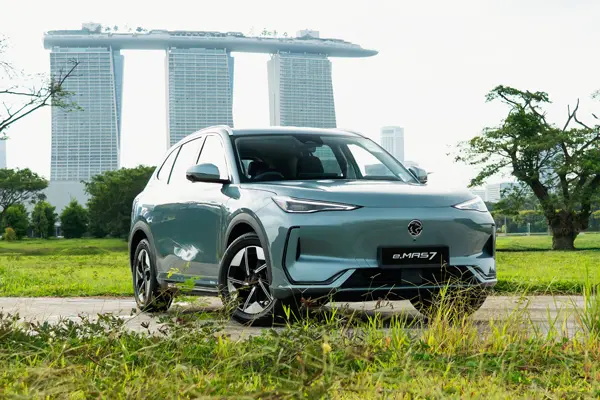How Budget 2023 will affect the ARFs of new cars: A sample of 23 models
17 Feb 2023|20,768 views
"I have adjusted vehicle taxes last year, but there is still scope to make them more progressive."
This is exactly how the bombshell news - that Singapore's ARF (additional registration fee) system would be revised yet again - was prefaced when the Minister for Finance was in the midst of delivering his speech for the nation's 2023 Budget.
With the new rules targeting cars with Open Market Values (OMVs) north of $40,000, the authorities expect the top one-third of cars to be affected by the change.
How does that change look like in terms of numbers? Upwards of $20,000, three incremental tiers (between $20,001 and $50,000, $50,001 and $80,000 and then north of $80,000) had previously been present.
By segmenting mid-tiers in multiples of $20,000 moving forward, however, the system will now include an additional mid-tier. They are now separated as such: Between $20,001 and $40,000, $40,001 and $60,000, $60,001 and $80,000 and finally, above $80,000. Increased rates also apply across the segments, with the final tier facing a radically higher 320% incremental rate (compared to 220% previously).
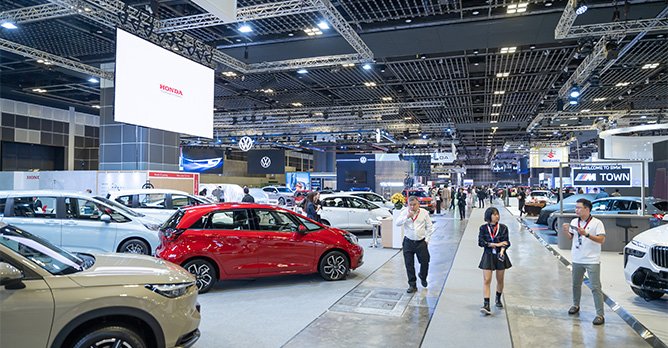
 Rather than pore over every tax component, most of us only look at the final figure when buying a car As with the likewise-surprising new measures introduced in 2022, the revisions will also take almost immediate effect, impacting cars registered from the next COE bidding round on 22 February.
Rather than pore over every tax component, most of us only look at the final figure when buying a car As with the likewise-surprising new measures introduced in 2022, the revisions will also take almost immediate effect, impacting cars registered from the next COE bidding round on 22 February.
But most of us are not faced with the OMV figures when shopping for a new car; we're (logically) only concerned with the final sum staring back at us when we sign on the dotted line - after everything else, including COE, emissions-related rebates (or penalties) and dealer's margins have been factored in.
As such, we're taking a look at a sample of 23 new car models in the market today to understand exactly what will change come next Wednesday - and to figure out where the estimated additional $200 million in revenue generated from the changes will mostly come from. To the best of our ability, we've included cars we feel would be of attention to the average Singaporean buyer/observer. (Figures follow LTA data from January 2023, unless stated otherwise.)
First group: Mass market to premium lite
In case there are doubts that the authorities are being disingenuous about the claim that the taxes are 'progressive' (i.e. targeted at the wealthy), let them dissipate.
Since only cars with an OMV of above $40,000 have been targeted, most of our mass-market favourites emerge completely unscathed by the changes.
The following table shows eight popular models in the new car market today - but bear in mind that a car's Vehicle Emissions Scheme (VES) banding can add up to $25,000 or shave up to $20,000 off its ARF, depending on how 'clean' its powertrain is.
*Figure taken from Sgcarmart's archives
Further rebates of up to 45% off a car's ARF (capped at $20,000) are also in place up till year end for early adopters of EVs under the EEAI. In order not to confuse matters, we haven't included them in this table - but it's worth noting that a fully-electric car like the BYD Atto 3, for instance, currently has an ARF of $0 since it ticks all the right boxes.
Worth noting too is that the entry points to Singapore's favourite luxury car brands, including Audi's 1.0-litre A3 Sedan and the BMW 2 Series Gran Coupe, are well under the $40,000 ceiling. Even Merc's bestselling seven-seater, the GLB180, manages to duck under it - and thus will not experience any ARF-related swings.
Second group: Middle children
While the headline is that cars with OMVs upwards of $40,000 have been affected, it goes without saying that not all will be affected equally. The following table includes seven models whose OMVs range from $40,001 to $80,000:
*Figure taken from Sgcarmart's archives
The Toyota Harrier Hybrid, with an OMV of just under $41,000, will only see its ARF increase by $463 - less than a third of its annual road tax - while the $2,114 bump for Skoda's Kodiaq RS doesn't even constitute 1% of its listed price.
What, then, about Singapore's favourite mid-sized executive sedans and SUVs?
To be fair, a $5,000 to $10,000 spike - as will be seen for cars like the BMW 5 Series 520i, Merc's E-Class sedan, the 'entry-level' Porsche Macan, and even the single-motor variant of the Tesla Model 3 - may sound like a lot of money in isolation.
Nonetheless, it's important to contextualise these once more, especially in light of how new car prices have trended over the last two years under the prevailing COE climate. In doing so, it's safe to classify the increases as slight tremors rather than tectonic shifts.
Third group: Flagships
Move up to flagship-territory, however, and the increases effected by the new system will start to make themselves more apparent.
As a rough gauge, cars in this segment have generally retailed around the $500,000 region over the last two years.
The $40,000 to $50,000 spike, as reflected in the table, will thus represent close to 10% of their overall pre-existing prices.
*Rough estimate based on retail prices in the U.S.A, taken from Car and Driver
Naturally, however, this isn't where things end.
Final group: One-percenters
Previously already affected most acutely by the revisions introduced in 2022's annual Budget, supercars and super-luxury cars will see their ARFs rise more than substantially yet again with the new policy in place.
The fresh supercar-seekers among today's young insurance/property agent crowd will have to work even harder to realise their dream cars in the future; large six-figure increases are guaranteed to impact the ARFs of even 'cheaper' models in the range of makes like Lamborghini and Bentley.
The following table includes five such models available in the new car market today.
*Rough estimates based on retail prices in the U.S.A, taken from Car and Driver
Fun fact: If one's sights are aimed even higher at exotic limited-run cars, the 1-in-40 Pagani Huayra Roadster BC recently showcased here presents a good example of how much more must be stomached. Its ARF balloons from approximately $7 million to just slightly over $10 million with the new rules - an insane $3 million increase.
To understand the size of the group that the government appears to have directly in its crosshairs, it would also be helpful to get an idea of how the luxury carmakers present here fared in 2022.
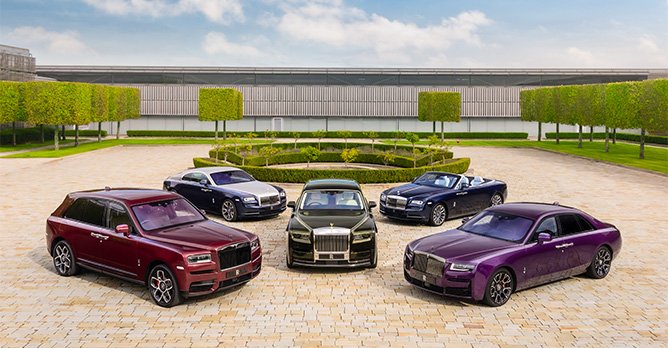
 Rolls-Royce's Bespoke program allows customers to tailor almost every detail of their individual car The numbers serve as an interesting data set to imagine how much additional revenue the new ARF system might generate purely based on these registrations of ultra-luxury cars.
Rolls-Royce's Bespoke program allows customers to tailor almost every detail of their individual car The numbers serve as an interesting data set to imagine how much additional revenue the new ARF system might generate purely based on these registrations of ultra-luxury cars.
Even with the most conservative figure of $200,000 per car, 300 cars will amount to $60 million additionally - or nearly a third of the government's estimated $200 million sum.
Still, this is likely to be much higher, since supercar prices are almost guaranteed to skyrocket with tailor-made options and specifications thrown into the mix.
Who's affected by the change? In reality - no one

 Unlike the 'free-market' COE system, the ARF scheme directly reflects what sorts of vehicles - and how much - the authorities deem necessary for taxing If the car market feels like it has heavily favoured the wealthier folk amongst us as COE premiums have risen indiscriminately over the last two years, the latest measures do evince an attempt by the authorities to shift the odds back against them.
Unlike the 'free-market' COE system, the ARF scheme directly reflects what sorts of vehicles - and how much - the authorities deem necessary for taxing If the car market feels like it has heavily favoured the wealthier folk amongst us as COE premiums have risen indiscriminately over the last two years, the latest measures do evince an attempt by the authorities to shift the odds back against them.
The ARF system, at its very core, is but another iteration of vehicle ownership taxation. Where it clearly differs from the COE system, however, is that its rules are entirely and firmly held in the hands of the authorities. No free market forces can come into play, and supply and demand cannot directly affect a vehicle's ARF; it can only alter the amount of revenue generated.
As with progressive taxes implemented in other arenas (such as housing), the new tiers are targeted, and arguably not unfair. Every party presented with an increased ARF now - whether that figure be $400 or $400,000 - will almost certainly be able to stomach the hike.
The question that has been amplified, however, is whether or not they're willing to do so. Time (and tax revenue) will tell.
Here are a few other articles that may interest you!
How has Singapore's automotive market changed over the past 10 years?
A different 2022 list: Toyota still leading, as BYD and Porsche knock on the Top 10's door
It's clear: The rich are getting richer (H1 2021)
This is exactly how the bombshell news - that Singapore's ARF (additional registration fee) system would be revised yet again - was prefaced when the Minister for Finance was in the midst of delivering his speech for the nation's 2023 Budget.
With the new rules targeting cars with Open Market Values (OMVs) north of $40,000, the authorities expect the top one-third of cars to be affected by the change.
How does that change look like in terms of numbers? Upwards of $20,000, three incremental tiers (between $20,001 and $50,000, $50,001 and $80,000 and then north of $80,000) had previously been present.
By segmenting mid-tiers in multiples of $20,000 moving forward, however, the system will now include an additional mid-tier. They are now separated as such: Between $20,001 and $40,000, $40,001 and $60,000, $60,001 and $80,000 and finally, above $80,000. Increased rates also apply across the segments, with the final tier facing a radically higher 320% incremental rate (compared to 220% previously).

But most of us are not faced with the OMV figures when shopping for a new car; we're (logically) only concerned with the final sum staring back at us when we sign on the dotted line - after everything else, including COE, emissions-related rebates (or penalties) and dealer's margins have been factored in.
As such, we're taking a look at a sample of 23 new car models in the market today to understand exactly what will change come next Wednesday - and to figure out where the estimated additional $200 million in revenue generated from the changes will mostly come from. To the best of our ability, we've included cars we feel would be of attention to the average Singaporean buyer/observer. (Figures follow LTA data from January 2023, unless stated otherwise.)
First group: Mass market to premium lite
In case there are doubts that the authorities are being disingenuous about the claim that the taxes are 'progressive' (i.e. targeted at the wealthy), let them dissipate.
Since only cars with an OMV of above $40,000 have been targeted, most of our mass-market favourites emerge completely unscathed by the changes.
The following table shows eight popular models in the new car market today - but bear in mind that a car's Vehicle Emissions Scheme (VES) banding can add up to $25,000 or shave up to $20,000 off its ARF, depending on how 'clean' its powertrain is.
| Model | OMV | Current base ARF | New base ARF | Amount increase | Percentage increase in ARF (excluding rebates/penalties) | |
| 1 | Honda HR-V DX | $16,318 | $16,318 | $16,318 | $0 | 0% |
| 2 | Toyota Corolla Altis Elegance | $21,661 | $22,325 | $22,325 | $0 | 0% |
| 3 | Mazda CX-5 Luxury | $23,577 | $25,001 | $25,001 | $0 | 0% |
| 4 | Kia Niro Hybrid EX | $25,469 | $27,657 | $27,657 | $0 | 0% |
| 5 | Audi A3 Sedan 1.0 | $28,140 | $31,396 | $31,396 | $0 | 0% |
| 6 | BMW 2 Series Gran Coupe 216i | $33,705 | $39,187 | $39,187 | $0 | 0% |
| 7 | BYD Atto 3 | $34,000* | $39,600 | $39,600 | $0 | 0% |
| 8 | Mercedes-Benz GLB180 Progressive | $36,567 | $43,194 | $43,194 | $0 | 0% |
Further rebates of up to 45% off a car's ARF (capped at $20,000) are also in place up till year end for early adopters of EVs under the EEAI. In order not to confuse matters, we haven't included them in this table - but it's worth noting that a fully-electric car like the BYD Atto 3, for instance, currently has an ARF of $0 since it ticks all the right boxes.
Worth noting too is that the entry points to Singapore's favourite luxury car brands, including Audi's 1.0-litre A3 Sedan and the BMW 2 Series Gran Coupe, are well under the $40,000 ceiling. Even Merc's bestselling seven-seater, the GLB180, manages to duck under it - and thus will not experience any ARF-related swings.
Second group: Middle children
While the headline is that cars with OMVs upwards of $40,000 have been affected, it goes without saying that not all will be affected equally. The following table includes seven models whose OMVs range from $40,001 to $80,000:
| Model | OMV | Current base ARF | New base ARF | Amount increase | Percentage increase in ARF (excluding rebates/penalties) | |
| 9 | Toyota Harrier Hybrid | $40,297 | $49,298 | $49,761 | $463 | 1% |
| 10 | Skoda Kodiaq RS | $44,228* | $53,919 | $56,033 | $2,114 | 4% |
| 11 | BMW 5 Series 520i Executive | $51,206 | $64,171 | $69,291 | $5,120 | 8% |
| 12 | Lexus NX 350h Executive | $53,363 | $68,053 | $73,390 | $5,337 | 8% |
| 13 | Mercedes-Benz E-Class E200 Exclusive | $56,151 | $73,072 | $78,687 | $5,615 | 8% |
| 14 | Tesla Model 3 RWD | $60,771 | $81,388 | $87,928 | $6,540 | 8% |
| 15 | Porsche Macan 2.0 | $65,863 | $90,553 | $100,656 | $10,103 | 11% |
The Toyota Harrier Hybrid, with an OMV of just under $41,000, will only see its ARF increase by $463 - less than a third of its annual road tax - while the $2,114 bump for Skoda's Kodiaq RS doesn't even constitute 1% of its listed price.
What, then, about Singapore's favourite mid-sized executive sedans and SUVs?
To be fair, a $5,000 to $10,000 spike - as will be seen for cars like the BMW 5 Series 520i, Merc's E-Class sedan, the 'entry-level' Porsche Macan, and even the single-motor variant of the Tesla Model 3 - may sound like a lot of money in isolation.
Nonetheless, it's important to contextualise these once more, especially in light of how new car prices have trended over the last two years under the prevailing COE climate. In doing so, it's safe to classify the increases as slight tremors rather than tectonic shifts.
Third group: Flagships
Move up to flagship-territory, however, and the increases effected by the new system will start to make themselves more apparent.
As a rough gauge, cars in this segment have generally retailed around the $500,000 region over the last two years.
The $40,000 to $50,000 spike, as reflected in the table, will thus represent close to 10% of their overall pre-existing prices.
| Model | OMV | Current base ARF | New base ARF | Amount increase | Percentage increase in ARF (excluding rebates/penalties) | |
| 16 | Porsche Cayenne 3.0 | $99,000* | $157,800 | $196,800 | $39,000 | 25% |
| 17 | BMW 7 Series 735i Pure Excellence | $102,460 | $165,412 | $207,872 | $42,460 | 26% |
| 18 | Mercedes-Benz S-Class S450L | $109,894 | $181,767 | $231,661 | $49,894 | 27% |
Naturally, however, this isn't where things end.
Final group: One-percenters
Previously already affected most acutely by the revisions introduced in 2022's annual Budget, supercars and super-luxury cars will see their ARFs rise more than substantially yet again with the new policy in place.
The fresh supercar-seekers among today's young insurance/property agent crowd will have to work even harder to realise their dream cars in the future; large six-figure increases are guaranteed to impact the ARFs of even 'cheaper' models in the range of makes like Lamborghini and Bentley.
The following table includes five such models available in the new car market today.
| Model | OMV | Current base ARF | New base ARF | Amount increase | Percentage increase in ARF (excluding rebates/penalties) | |
| 19 | Bentley Bentayga V8 | $255,000* | $501,000 | $696,000 | $195,000 | 39% |
| 20 | Lamborghini Urus | $307,000* | $614,630 | $862,400 | $247,770 | 40% |
| 21 | Lamborghini Huracan Evo | $332,000* | $670,400 | $942,400 | $272,000 | 41% |
| 22 | Rolls-Royce Cullinan Black Badge | $422,000 | $868,400 | $1,230,400 | $362,000 | 42% |
| 23 | Ferrari 296 GTB | $451,000* | $888,200 | $1,323,200 | $435,000 | 49% |
Fun fact: If one's sights are aimed even higher at exotic limited-run cars, the 1-in-40 Pagani Huayra Roadster BC recently showcased here presents a good example of how much more must be stomached. Its ARF balloons from approximately $7 million to just slightly over $10 million with the new rules - an insane $3 million increase.
To understand the size of the group that the government appears to have directly in its crosshairs, it would also be helpful to get an idea of how the luxury carmakers present here fared in 2022.
| Brand | Units registered in 2022 |
| Bentley | 100 |
| Ferrari | 95 |
| Rolls-Royce | 93 |
| Lamborghini | 23 |
| McLaren | 20 |
| Aston Martin | 18 |
| Total | 349 |

Even with the most conservative figure of $200,000 per car, 300 cars will amount to $60 million additionally - or nearly a third of the government's estimated $200 million sum.
Still, this is likely to be much higher, since supercar prices are almost guaranteed to skyrocket with tailor-made options and specifications thrown into the mix.
Who's affected by the change? In reality - no one

The ARF system, at its very core, is but another iteration of vehicle ownership taxation. Where it clearly differs from the COE system, however, is that its rules are entirely and firmly held in the hands of the authorities. No free market forces can come into play, and supply and demand cannot directly affect a vehicle's ARF; it can only alter the amount of revenue generated.
As with progressive taxes implemented in other arenas (such as housing), the new tiers are targeted, and arguably not unfair. Every party presented with an increased ARF now - whether that figure be $400 or $400,000 - will almost certainly be able to stomach the hike.
The question that has been amplified, however, is whether or not they're willing to do so. Time (and tax revenue) will tell.
Here are a few other articles that may interest you!
How has Singapore's automotive market changed over the past 10 years?
A different 2022 list: Toyota still leading, as BYD and Porsche knock on the Top 10's door
It's clear: The rich are getting richer (H1 2021)
"I have adjusted vehicle taxes last year, but there is still scope to make them more progressive."
This is exactly how the bombshell news - that Singapore's ARF (additional registration fee) system would be revised yet again - was prefaced when the Minister for Finance was in the midst of delivering his speech for the nation's 2023 Budget.
With the new rules targeting cars with Open Market Values (OMVs) north of $40,000, the authorities expect the top one-third of cars to be affected by the change.
How does that change look like in terms of numbers? Upwards of $20,000, three incremental tiers (between $20,001 and $50,000, $50,001 and $80,000 and then north of $80,000) had previously been present.
By segmenting mid-tiers in multiples of $20,000 moving forward, however, the system will now include an additional mid-tier. They are now separated as such: Between $20,001 and $40,000, $40,001 and $60,000, $60,001 and $80,000 and finally, above $80,000. Increased rates also apply across the segments, with the final tier facing a radically higher 320% incremental rate (compared to 220% previously).

 Rather than pore over every tax component, most of us only look at the final figure when buying a car As with the likewise-surprising new measures introduced in 2022, the revisions will also take almost immediate effect, impacting cars registered from the next COE bidding round on 22 February.
Rather than pore over every tax component, most of us only look at the final figure when buying a car As with the likewise-surprising new measures introduced in 2022, the revisions will also take almost immediate effect, impacting cars registered from the next COE bidding round on 22 February.
But most of us are not faced with the OMV figures when shopping for a new car; we're (logically) only concerned with the final sum staring back at us when we sign on the dotted line - after everything else, including COE, emissions-related rebates (or penalties) and dealer's margins have been factored in.
As such, we're taking a look at a sample of 23 new car models in the market today to understand exactly what will change come next Wednesday - and to figure out where the estimated additional $200 million in revenue generated from the changes will mostly come from. To the best of our ability, we've included cars we feel would be of attention to the average Singaporean buyer/observer. (Figures follow LTA data from January 2023, unless stated otherwise.)
First group: Mass market to premium lite
In case there are doubts that the authorities are being disingenuous about the claim that the taxes are 'progressive' (i.e. targeted at the wealthy), let them dissipate.
Since only cars with an OMV of above $40,000 have been targeted, most of our mass-market favourites emerge completely unscathed by the changes.
The following table shows eight popular models in the new car market today - but bear in mind that a car's Vehicle Emissions Scheme (VES) banding can add up to $25,000 or shave up to $20,000 off its ARF, depending on how 'clean' its powertrain is.
*Figure taken from Sgcarmart's archives
Further rebates of up to 45% off a car's ARF (capped at $20,000) are also in place up till year end for early adopters of EVs under the EEAI. In order not to confuse matters, we haven't included them in this table - but it's worth noting that a fully-electric car like the BYD Atto 3, for instance, currently has an ARF of $0 since it ticks all the right boxes.
Worth noting too is that the entry points to Singapore's favourite luxury car brands, including Audi's 1.0-litre A3 Sedan and the BMW 2 Series Gran Coupe, are well under the $40,000 ceiling. Even Merc's bestselling seven-seater, the GLB180, manages to duck under it - and thus will not experience any ARF-related swings.
Second group: Middle children
While the headline is that cars with OMVs upwards of $40,000 have been affected, it goes without saying that not all will be affected equally. The following table includes seven models whose OMVs range from $40,001 to $80,000:
*Figure taken from Sgcarmart's archives
The Toyota Harrier Hybrid, with an OMV of just under $41,000, will only see its ARF increase by $463 - less than a third of its annual road tax - while the $2,114 bump for Skoda's Kodiaq RS doesn't even constitute 1% of its listed price.
What, then, about Singapore's favourite mid-sized executive sedans and SUVs?
To be fair, a $5,000 to $10,000 spike - as will be seen for cars like the BMW 5 Series 520i, Merc's E-Class sedan, the 'entry-level' Porsche Macan, and even the single-motor variant of the Tesla Model 3 - may sound like a lot of money in isolation.
Nonetheless, it's important to contextualise these once more, especially in light of how new car prices have trended over the last two years under the prevailing COE climate. In doing so, it's safe to classify the increases as slight tremors rather than tectonic shifts.
Third group: Flagships
Move up to flagship-territory, however, and the increases effected by the new system will start to make themselves more apparent.
As a rough gauge, cars in this segment have generally retailed around the $500,000 region over the last two years.
The $40,000 to $50,000 spike, as reflected in the table, will thus represent close to 10% of their overall pre-existing prices.
*Rough estimate based on retail prices in the U.S.A, taken from Car and Driver
Naturally, however, this isn't where things end.
Final group: One-percenters
Previously already affected most acutely by the revisions introduced in 2022's annual Budget, supercars and super-luxury cars will see their ARFs rise more than substantially yet again with the new policy in place.
The fresh supercar-seekers among today's young insurance/property agent crowd will have to work even harder to realise their dream cars in the future; large six-figure increases are guaranteed to impact the ARFs of even 'cheaper' models in the range of makes like Lamborghini and Bentley.
The following table includes five such models available in the new car market today.
*Rough estimates based on retail prices in the U.S.A, taken from Car and Driver
Fun fact: If one's sights are aimed even higher at exotic limited-run cars, the 1-in-40 Pagani Huayra Roadster BC recently showcased here presents a good example of how much more must be stomached. Its ARF balloons from approximately $7 million to just slightly over $10 million with the new rules - an insane $3 million increase.
To understand the size of the group that the government appears to have directly in its crosshairs, it would also be helpful to get an idea of how the luxury carmakers present here fared in 2022.

 Rolls-Royce's Bespoke program allows customers to tailor almost every detail of their individual car The numbers serve as an interesting data set to imagine how much additional revenue the new ARF system might generate purely based on these registrations of ultra-luxury cars.
Rolls-Royce's Bespoke program allows customers to tailor almost every detail of their individual car The numbers serve as an interesting data set to imagine how much additional revenue the new ARF system might generate purely based on these registrations of ultra-luxury cars.
Even with the most conservative figure of $200,000 per car, 300 cars will amount to $60 million additionally - or nearly a third of the government's estimated $200 million sum.
Still, this is likely to be much higher, since supercar prices are almost guaranteed to skyrocket with tailor-made options and specifications thrown into the mix.
Who's affected by the change? In reality - no one

 Unlike the 'free-market' COE system, the ARF scheme directly reflects what sorts of vehicles - and how much - the authorities deem necessary for taxing If the car market feels like it has heavily favoured the wealthier folk amongst us as COE premiums have risen indiscriminately over the last two years, the latest measures do evince an attempt by the authorities to shift the odds back against them.
Unlike the 'free-market' COE system, the ARF scheme directly reflects what sorts of vehicles - and how much - the authorities deem necessary for taxing If the car market feels like it has heavily favoured the wealthier folk amongst us as COE premiums have risen indiscriminately over the last two years, the latest measures do evince an attempt by the authorities to shift the odds back against them.
The ARF system, at its very core, is but another iteration of vehicle ownership taxation. Where it clearly differs from the COE system, however, is that its rules are entirely and firmly held in the hands of the authorities. No free market forces can come into play, and supply and demand cannot directly affect a vehicle's ARF; it can only alter the amount of revenue generated.
As with progressive taxes implemented in other arenas (such as housing), the new tiers are targeted, and arguably not unfair. Every party presented with an increased ARF now - whether that figure be $400 or $400,000 - will almost certainly be able to stomach the hike.
The question that has been amplified, however, is whether or not they're willing to do so. Time (and tax revenue) will tell.
Here are a few other articles that may interest you!
How has Singapore's automotive market changed over the past 10 years?
A different 2022 list: Toyota still leading, as BYD and Porsche knock on the Top 10's door
It's clear: The rich are getting richer (H1 2021)
This is exactly how the bombshell news - that Singapore's ARF (additional registration fee) system would be revised yet again - was prefaced when the Minister for Finance was in the midst of delivering his speech for the nation's 2023 Budget.
With the new rules targeting cars with Open Market Values (OMVs) north of $40,000, the authorities expect the top one-third of cars to be affected by the change.
How does that change look like in terms of numbers? Upwards of $20,000, three incremental tiers (between $20,001 and $50,000, $50,001 and $80,000 and then north of $80,000) had previously been present.
By segmenting mid-tiers in multiples of $20,000 moving forward, however, the system will now include an additional mid-tier. They are now separated as such: Between $20,001 and $40,000, $40,001 and $60,000, $60,001 and $80,000 and finally, above $80,000. Increased rates also apply across the segments, with the final tier facing a radically higher 320% incremental rate (compared to 220% previously).

But most of us are not faced with the OMV figures when shopping for a new car; we're (logically) only concerned with the final sum staring back at us when we sign on the dotted line - after everything else, including COE, emissions-related rebates (or penalties) and dealer's margins have been factored in.
As such, we're taking a look at a sample of 23 new car models in the market today to understand exactly what will change come next Wednesday - and to figure out where the estimated additional $200 million in revenue generated from the changes will mostly come from. To the best of our ability, we've included cars we feel would be of attention to the average Singaporean buyer/observer. (Figures follow LTA data from January 2023, unless stated otherwise.)
First group: Mass market to premium lite
In case there are doubts that the authorities are being disingenuous about the claim that the taxes are 'progressive' (i.e. targeted at the wealthy), let them dissipate.
Since only cars with an OMV of above $40,000 have been targeted, most of our mass-market favourites emerge completely unscathed by the changes.
The following table shows eight popular models in the new car market today - but bear in mind that a car's Vehicle Emissions Scheme (VES) banding can add up to $25,000 or shave up to $20,000 off its ARF, depending on how 'clean' its powertrain is.
| Model | OMV | Current base ARF | New base ARF | Amount increase | Percentage increase in ARF (excluding rebates/penalties) | |
| 1 | Honda HR-V DX | $16,318 | $16,318 | $16,318 | $0 | 0% |
| 2 | Toyota Corolla Altis Elegance | $21,661 | $22,325 | $22,325 | $0 | 0% |
| 3 | Mazda CX-5 Luxury | $23,577 | $25,001 | $25,001 | $0 | 0% |
| 4 | Kia Niro Hybrid EX | $25,469 | $27,657 | $27,657 | $0 | 0% |
| 5 | Audi A3 Sedan 1.0 | $28,140 | $31,396 | $31,396 | $0 | 0% |
| 6 | BMW 2 Series Gran Coupe 216i | $33,705 | $39,187 | $39,187 | $0 | 0% |
| 7 | BYD Atto 3 | $34,000* | $39,600 | $39,600 | $0 | 0% |
| 8 | Mercedes-Benz GLB180 Progressive | $36,567 | $43,194 | $43,194 | $0 | 0% |
Further rebates of up to 45% off a car's ARF (capped at $20,000) are also in place up till year end for early adopters of EVs under the EEAI. In order not to confuse matters, we haven't included them in this table - but it's worth noting that a fully-electric car like the BYD Atto 3, for instance, currently has an ARF of $0 since it ticks all the right boxes.
Worth noting too is that the entry points to Singapore's favourite luxury car brands, including Audi's 1.0-litre A3 Sedan and the BMW 2 Series Gran Coupe, are well under the $40,000 ceiling. Even Merc's bestselling seven-seater, the GLB180, manages to duck under it - and thus will not experience any ARF-related swings.
Second group: Middle children
While the headline is that cars with OMVs upwards of $40,000 have been affected, it goes without saying that not all will be affected equally. The following table includes seven models whose OMVs range from $40,001 to $80,000:
| Model | OMV | Current base ARF | New base ARF | Amount increase | Percentage increase in ARF (excluding rebates/penalties) | |
| 9 | Toyota Harrier Hybrid | $40,297 | $49,298 | $49,761 | $463 | 1% |
| 10 | Skoda Kodiaq RS | $44,228* | $53,919 | $56,033 | $2,114 | 4% |
| 11 | BMW 5 Series 520i Executive | $51,206 | $64,171 | $69,291 | $5,120 | 8% |
| 12 | Lexus NX 350h Executive | $53,363 | $68,053 | $73,390 | $5,337 | 8% |
| 13 | Mercedes-Benz E-Class E200 Exclusive | $56,151 | $73,072 | $78,687 | $5,615 | 8% |
| 14 | Tesla Model 3 RWD | $60,771 | $81,388 | $87,928 | $6,540 | 8% |
| 15 | Porsche Macan 2.0 | $65,863 | $90,553 | $100,656 | $10,103 | 11% |
The Toyota Harrier Hybrid, with an OMV of just under $41,000, will only see its ARF increase by $463 - less than a third of its annual road tax - while the $2,114 bump for Skoda's Kodiaq RS doesn't even constitute 1% of its listed price.
What, then, about Singapore's favourite mid-sized executive sedans and SUVs?
To be fair, a $5,000 to $10,000 spike - as will be seen for cars like the BMW 5 Series 520i, Merc's E-Class sedan, the 'entry-level' Porsche Macan, and even the single-motor variant of the Tesla Model 3 - may sound like a lot of money in isolation.
Nonetheless, it's important to contextualise these once more, especially in light of how new car prices have trended over the last two years under the prevailing COE climate. In doing so, it's safe to classify the increases as slight tremors rather than tectonic shifts.
Third group: Flagships
Move up to flagship-territory, however, and the increases effected by the new system will start to make themselves more apparent.
As a rough gauge, cars in this segment have generally retailed around the $500,000 region over the last two years.
The $40,000 to $50,000 spike, as reflected in the table, will thus represent close to 10% of their overall pre-existing prices.
| Model | OMV | Current base ARF | New base ARF | Amount increase | Percentage increase in ARF (excluding rebates/penalties) | |
| 16 | Porsche Cayenne 3.0 | $99,000* | $157,800 | $196,800 | $39,000 | 25% |
| 17 | BMW 7 Series 735i Pure Excellence | $102,460 | $165,412 | $207,872 | $42,460 | 26% |
| 18 | Mercedes-Benz S-Class S450L | $109,894 | $181,767 | $231,661 | $49,894 | 27% |
Naturally, however, this isn't where things end.
Final group: One-percenters
Previously already affected most acutely by the revisions introduced in 2022's annual Budget, supercars and super-luxury cars will see their ARFs rise more than substantially yet again with the new policy in place.
The fresh supercar-seekers among today's young insurance/property agent crowd will have to work even harder to realise their dream cars in the future; large six-figure increases are guaranteed to impact the ARFs of even 'cheaper' models in the range of makes like Lamborghini and Bentley.
The following table includes five such models available in the new car market today.
| Model | OMV | Current base ARF | New base ARF | Amount increase | Percentage increase in ARF (excluding rebates/penalties) | |
| 19 | Bentley Bentayga V8 | $255,000* | $501,000 | $696,000 | $195,000 | 39% |
| 20 | Lamborghini Urus | $307,000* | $614,630 | $862,400 | $247,770 | 40% |
| 21 | Lamborghini Huracan Evo | $332,000* | $670,400 | $942,400 | $272,000 | 41% |
| 22 | Rolls-Royce Cullinan Black Badge | $422,000 | $868,400 | $1,230,400 | $362,000 | 42% |
| 23 | Ferrari 296 GTB | $451,000* | $888,200 | $1,323,200 | $435,000 | 49% |
Fun fact: If one's sights are aimed even higher at exotic limited-run cars, the 1-in-40 Pagani Huayra Roadster BC recently showcased here presents a good example of how much more must be stomached. Its ARF balloons from approximately $7 million to just slightly over $10 million with the new rules - an insane $3 million increase.
To understand the size of the group that the government appears to have directly in its crosshairs, it would also be helpful to get an idea of how the luxury carmakers present here fared in 2022.
| Brand | Units registered in 2022 |
| Bentley | 100 |
| Ferrari | 95 |
| Rolls-Royce | 93 |
| Lamborghini | 23 |
| McLaren | 20 |
| Aston Martin | 18 |
| Total | 349 |

Even with the most conservative figure of $200,000 per car, 300 cars will amount to $60 million additionally - or nearly a third of the government's estimated $200 million sum.
Still, this is likely to be much higher, since supercar prices are almost guaranteed to skyrocket with tailor-made options and specifications thrown into the mix.
Who's affected by the change? In reality - no one

The ARF system, at its very core, is but another iteration of vehicle ownership taxation. Where it clearly differs from the COE system, however, is that its rules are entirely and firmly held in the hands of the authorities. No free market forces can come into play, and supply and demand cannot directly affect a vehicle's ARF; it can only alter the amount of revenue generated.
As with progressive taxes implemented in other arenas (such as housing), the new tiers are targeted, and arguably not unfair. Every party presented with an increased ARF now - whether that figure be $400 or $400,000 - will almost certainly be able to stomach the hike.
The question that has been amplified, however, is whether or not they're willing to do so. Time (and tax revenue) will tell.
Here are a few other articles that may interest you!
How has Singapore's automotive market changed over the past 10 years?
A different 2022 list: Toyota still leading, as BYD and Porsche knock on the Top 10's door
It's clear: The rich are getting richer (H1 2021)
Thank You For Your Subscription.











